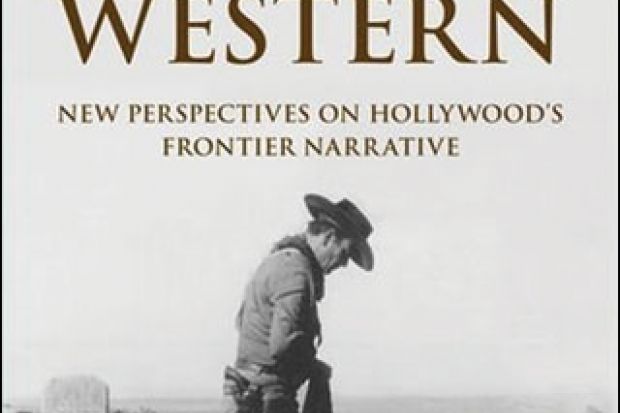Were this book to be adapted as a Hollywood movie (not, admittedly, a likely event), a good title might be Shootout at Critics’ Gulch. Although Matthew Carter has in his sights many of the traditional black-hat villains of the cinematic frontier myth – notions of manifest destiny, racial superiority, American exceptionalism and their ilk – he reserves much of his fire for his fellow academics, especially those who espouse what he sums up as “the evolution theory of Westerns”.
By this, he means those studies of the genre that broadly divide the history of westerns into three successive phases: “classical”, “revisionist” and “post”. Classical westerns, according to this taxonomy, celebrate the “winning of the West” and the bringing of civilisation to the frontier, although perhaps with a regretful side-glance at the lost freedoms represented by the romantic figure of the lone gunfighter. Revisionist westerns, linked to the turbulence and disillusionment of the 1960s (Vietnam, racial conflict, high-profile assassinations) adopt a more cynical angle, questioning the old certainties, introducing darker, more ambiguous heroes and attacking the triumphalist view of frontier history. And the spectral crew of post-westerns follow what these theorists see as the demise of the western in its archetypal form, when the heroic frontier myth had lost all relevance and become discredited.
Carter’s thesis, briefly stated, is that things are much more complex than that. Many classical westerns such as Stagecoach (1939) and Shane (1953), he maintains, on closer examination can be shown to adopt a deeply ambivalent attitude to the heroic frontier myth. Equally, revisionist westerns and post-westerns often endorse traditionalist attitudes (to race, to gender roles) beneath their ostensibly radical reworking of the genre. To develop his thesis, he focuses in each of his five chapters on one representative specimen: besides Shane, these are The Searchers (1956), Unforgiven (1992), The Three Burials of Melquiades Estrada (2005) and No Country for Old Men (2007) – although a good many other westerns are cited to support his argument. The latter two titles allow Carter to extend his thesis to take in not just the historical frontier but also its modern-day counterpart, la frontera.
These last two chapters are also by some way the strongest part of the book, partly because the “southern” western of the Rio Grande and the Texas-Mexico border has attracted comparatively little critical attention, and partly because these movies have been far less written about than the three earlier titles. As a result, Carter can spend less time looking over his shoulder and fending off alternative theories, and his writing is all the better for it. In these pages he explores the western’s “protean ability to adapt and improvise” and notes how a potent myth such as the frontier narrative can either bind to destructive patterns of behaviour or, in a film as nuanced as John Sayles’ Lone Star (1995), serve as a means of liberation from them.
Carter’s style is lucid and largely free from jargon, although he betrays a weakness for academic-speak: “As I have thus far demonstrated”, “I shall now focus on”. And given how often he chides fellow critics for inaccurate readings, it’s unfortunate that he repeatedly refers to a Clint Eastwood movie entitled The Outlaw Josie Whales (sic). But for the most part, this is a well-argued and challenging analysis. Further down the canyon, no doubt, critical six-guns are already being oiled.
Myth of the Western: New Perspectives on Hollywood’s Frontier Narrative
By Matthew Carter
Edinburgh University Press, 256pp, £70.00
ISBN 9780748685585
Published 11 March 2014
Register to continue
Why register?
- Registration is free and only takes a moment
- Once registered, you can read 3 articles a month
- Sign up for our newsletter
Subscribe
Or subscribe for unlimited access to:
- Unlimited access to news, views, insights & reviews
- Digital editions
- Digital access to THE’s university and college rankings analysis
Already registered or a current subscriber?





